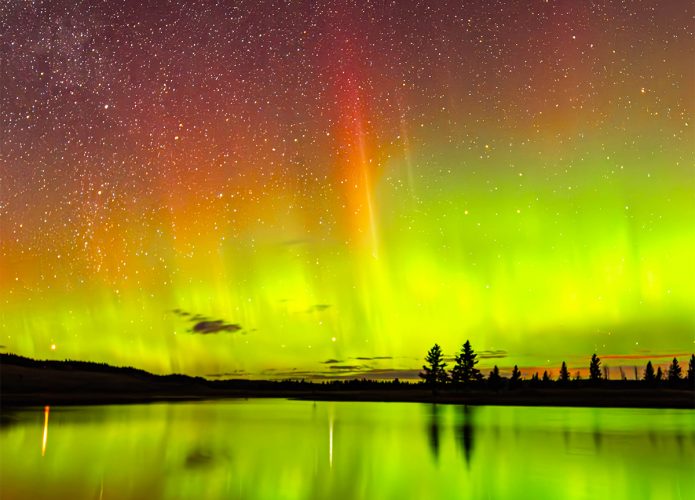If you've been lucky enough to witness the majestic dance of lights in the sky known as the aurora borealis, or simply viewed it digitally, the vibrant blue-green image has likely been burned into your memory.
However, there is something interesting about this phenomenon that many observers have noticed: the orange aurora. However, this orange color is actually a sneaky color and is not an “official” color among the known colors of this wonderful phenomenon.
{{#values}} {{#ap}}
{{/ap}} {{^ap}}
{{/ap}} {{/values}}
Read also:
Let's explore the aurora borealis beyond the surface and uncover the mystery behind the orange color that captures our attention, discussing the science behind the colors and why we perceive that color even when it's not “there.”
Why are the northern lights colorful?
First of all, it is necessary to understand why this natural phenomenon is so amazingly colorful. Auroras are the result of interactions between charged particles, especially electrons, from the solar wind and atmospheric gases, such as oxygen and nitrogen.
When these particles collide with gases in the atmosphere, reactions occur that release energy in the form of visible light. Each gas emits light of a specific color when excited, creating the dazzling spectacle of color that is the aurora borealis.
What are the colors of the northern lights?
The traditional colors associated with the northern lights include the most common shades of green and blue, as well as violet and pink. These colors result from interactions between electrons and different atmospheric gases, and each contributes to the dazzling palette of colors that paint the night sky in the polar regions.

When electrons collide with oxygen at certain altitudes, they emit green and red light. Nitrogen can contribute shades of blue, violet and pink. So it's the combination of these interactions that creates the multicolored aurora we know, but none of these gases exist that can give us a true orange aurora.
And the orange aurora borealis?
Now, we turn our curious eyes to orange, which although not officially listed as the dominant color of the Northern Lights, many observers have reported seeing it. The explanation for this apparent anomaly lies in a very simple phrase: we are deceived.
But don't worry, this doesn't mean the orange aurora is somehow being projected onto us. The orange color that many claim to see in the aurora borealis can be attributed in part to the way our eyes and brain process light.
Our perception of color is complex and influenced by many factors, such as light intensity, the eye's adaptation to darkness, and even our prior expectations.

It is possible, under certain viewing and perceptual conditions, that the dominant colors of the northern lights combine in such a way as to create the impression that we are actually seeing an orange aurora. This may be amplified by the fact that the aurora is a constantly moving phenomenon, and its colors can blend together in surprising ways.
But what about videos and photos?
The way cameras capture and process colors can also affect the perception of the Northern Lights. In many photographs, color intensity is increased to highlight details and make the image more vibrant. This can result in a more visible representation of the color orange, although it is not evident to the naked eye.
Therefore, even in an image taken with high-resolution, high-fidelity equipment, it is possible to still see the orange aurora, even if it is not actually there.
Ultimately, the question of the orange aurora is a fascinating combination of science, human perception, and changing weather conditions. Although the color has not been officially attributed to this phenomenon, it is clear that the aurora borealis continues to surprise and delight observers around the world.
The aurora is colored due to interactions between charged particles from the solar wind and atmospheric gases such as oxygen and nitrogen. These reactions release energy in the form of visible light, creating the different colors that make up the display.
Colors traditionally associated with the aurora borealis include green, blue, violet and pink. These colors are created by specific interactions between electrons and different atmospheric gases at different altitudes. However, the northern lights can surprise you with unique color variations and combinations.

“Hardcore beer fanatic. Falls down a lot. Professional coffee fan. Music ninja.”







More Stories
Orobucha cases ’emerge from the shadow’ of dengue
A young Brazilian researcher is awarded a prize at the largest pre-university science and engineering fair in the world – Surgiu
“The struggle for education, science and technology is a struggle to find a way out for humanity,” says Edna.